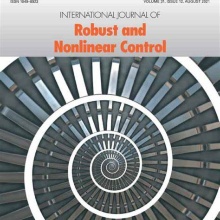In this work, we investigate the state observer problem for linear mechanical systems with a single unilateral constraint, for which neither the impact time instants nor the contact distance is explicitly measured. We propose to attack the observer problem by transforming and approximating the original continuous-time system by a discrete linear complementarity system (LCS) through the use of the Schatzman–Paoli scheme. From there, we derive a deadbeat observer in the form of a linear complementarity problem. Sufficient conditions guaranteeing the uniqueness of its solution then serve as observability conditions. In addition, the discrete adaptation of an existing passivity-based observer design for LCSs can be applied. A key point in using a time discretization is that the discretization acts as a regularization, that is, the impacts take place over multiple time steps (here two time steps). This makes it possible to render the estimation error dynamics asymptotically stable. Furthermore, the so-called peaking phenomenon appears as singularity within the time discretization approach, posing a challenge for robust observer design. In this work, we investigate the state observer problem for linear mechanical systems with a single unilateral constraint, for which neither the impact time instants nor the contact distance is explicitly measured. We propose to attack the observer problem by transforming and approximating the original continuous-time system by a discrete linear complementarity system (LCS) through the use of the Schatzman–Paoli scheme. From there, we derive a deadbeat observer in the form of a linear complementarity problem. Sufficient conditions guaranteeing the uniqueness of its solution then serve as observability conditions. In addition, the discrete adaptation of an existing passivity-based observer design for LCSs can be applied. A key point in using a time discretization is that the discretization acts as a regularization, that is, the impacts take place over multiple time steps (here two time steps). This makes it possible to render the estimation error dynamics asymptotically stable. Furthermore, the so-called peaking phenomenon appears as singularity within the time discretization approach, posing a challenge for robust observer design.
| Attachments |
|---|

Remco I. Leine
Prof. Dr. ir. habil.director


